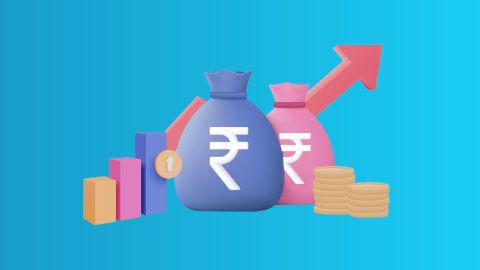The primary sector forms the foundation of any economy, focusing on the extraction and utilisation of natural resources through activities such as agriculture, mining, fishing, forestry, and quarrying. This article delves into the various classifications within the sector, its vital role in supporting secondary and tertiary industries, and its impact on employment, exports, and rural development. It also examines how modernising the primary sector, through the adoption of technology and access to business loans, can enhance efficiency and sustainability. Readers will gain a clear understanding of how this sector not only drives economic activity but also underpins food security, environmental stability, and long-term national progress.
What is the primary sector?
The primary sector includes essential industries such as agriculture, mining, fishing, forestry, and quarrying. These sectors play a crucial role by supplying raw materials needed by secondary and tertiary sectors for manufacturing and consumption. Agriculture involves cultivating crops and raising livestock, while mining extracts minerals and fossil fuels. Fishing contributes through the capture of aquatic organisms, and forestry involves managing and harvesting forests sustainably. Quarrying extracts materials like stone and sand for construction. Together, these industries support economic development by providing the raw materials necessary for industrial processes and infrastructure. Many businesses in these areas often consider startup business loans to fund expansion and modernisation. If you are looking to grow your business, you can easily check your business loan eligibility online to explore your financing options.
Business loans can facilitate growth in the primary sector industry by providing financial resources for expanding operations, purchasing equipment, and investing in technology to improve efficiency and sustainability. Access to business loans enables primary sector enterprises to enhance production capacity, meet market demand, and adopt modern practices, thereby contributing to economic stability and resource management. Moreover, you can check your pre-approved business loan offers instantly, helping you make quicker financial decisions.
Classifications for the primary sector
The primary sector can be classified into distinct categories based on the nature of natural resources involved and the methods used:
- Agriculture: This includes cultivation of crops, livestock farming, and poultry. It is a cornerstone of the primary sector, providing food and raw materials for various industries.
- Mining: Extraction of minerals, ores, and fossil fuels from the Earth's crust. This includes activities ranging from coal mining to the extraction of precious metals like gold and silver.
- Fishing: Involves the capture of fish and other aquatic organisms from oceans, rivers, and lakes. It also includes aquaculture, which is the farming of fish and other aquatic species.
- Forestry: This involves the management, conservation, and harvesting of forests for timber, pulpwood, and other forest products. Forestry practices also focus on sustainable management to ensure the long-term health of forests.
- Quarrying: Extraction of stone, sand, and gravel from quarries for construction purposes. It plays a vital role in infrastructure development and building materials production.
Each classification within the primary sector serves as a critical source of raw materials that support industrial activities and contribute significantly to national and global economies.
Benefits of the primary sector
The primary sector, which includes activities such as farming, fishing, forestry, and mining, forms the backbone of many economies. It involves extracting natural resources and raw materials, providing the essential inputs for other sectors. Here are some key benefits of the primary sector:
- Economic foundation: The primary sector is crucial for the economy. It provides raw materials for industries, which are essential for manufacturing goods. This helps in creating jobs and boosting the economy.
- Employment: The primary sector offers numerous employment opportunities, especially in rural areas. It helps in reducing unemployment and underemployment, thus improving the standard of living for many people.
- Food security: Agriculture, a significant part of the primary sector, ensures food security by providing a steady supply of food. It supports the population's nutritional needs and contributes to overall health and wellbeing.
- Export earnings: Many countries export primary goods such as timber, fish, minerals, and crops. This brings in foreign exchange, which can be used to import other goods and services, thus balancing trade deficits.
- Rural development: The primary sector plays a significant role in the development of rural areas. It promotes infrastructure development, such as roads and schools, and enhances the overall quality of life in these regions.
- Environmental stewardship: Sustainable practices in farming, forestry, and fishing help maintain ecological balance. Proper management of natural resources ensures their availability for future generations.
- Technological advancements: The primary sector often drives technological innovations aimed at increasing productivity and efficiency. These advancements can spill over into other sectors, fostering overall economic growth.
Drawbacks of the primary sector
The primary sector, which includes industries like agriculture, mining, fishing, and forestry, forms the base of most economies by providing raw materials. However, relying heavily on this sector has several disadvantages that can impact economic stability and development.
- Economic vulnerability: Economies heavily reliant on the primary sector are often susceptible to price fluctuations in global markets. For example, a drop in the price of oil or crops can significantly affect national income.
- Environmental degradation: Activities in the primary sector can lead to environmental damage. Deforestation, overfishing, and mining can result in loss of biodiversity, soil erosion, and water pollution, which have long-term detrimental effects.
- Limited technological progress: The primary sector typically involves less technological advancement compared to manufacturing or services. This can stifle innovation and keep economies less competitive in the global market.
- Economic instability: Relying on primary products means the economy is less diversified. This can make it more vulnerable to external shocks like natural disasters, which can wipe out entire industries overnight.
Overall, while the primary sector is essential for providing raw materials and employment, its drawbacks highlight the need for a balanced and diversified economy to ensure sustainable development and stability.
Primary sector examples
The primary sector of the economy is concerned with the extraction and production of raw materials. This sector plays a vital role in many countries, providing the basic materials that the industrial sector and other sectors use to create products and services. Here are some examples of primary sector activities:
Agriculture: This includes farming, which involves growing crops such as wheat, barley, and vegetables, and raising animals like cows, sheep, and chickens. Agriculture provides food and raw materials for other industries.
Fishing: This involves catching fish and other seafood from oceans, rivers, and lakes. Fishing provides a source of food and raw materials for industries such as canning and processing.
Forestry: This includes the management and harvesting of forests for wood and other forest products. Forestry provides raw materials for industries like paper, furniture, and construction.
Mining: This involves extracting minerals, metals, and other geological materials from the earth. Examples include coal mining, oil drilling, and quarrying for stone. Mining provides essential materials for energy production and manufacturing.
Hunting and gathering: Although less common in modern economies, this includes the collection of wild plants and the hunting of wild animals for food, materials, and other uses. This is still an important activity in some traditional and indigenous communities.
What are the challenges and opportunities faced by the primary sector
Despite being fundamental to economic and societal well-being, the primary sector continues to face several pressing challenges. However, these also open doors for transformation and innovation. Below is a structured look at the evolving landscape:
Major challenges in the primary sector
- Environmental pressures: Shifts in climate patterns, rising global temperatures, and water shortages have begun to disrupt farming cycles, fish habitats, and extraction timelines.
- Declining natural reserves: Excessive and unregulated use of natural assets such as soil, minerals, and marine stocks threatens long-term sustainability.
- Workforce gaps: A shrinking labour base in agriculture and allied sectors is leading to decreased output and higher dependency on fewer hands.
- Global price fluctuations: The sector remains vulnerable to unpredictable commodity markets, making income unstable for producers and exporters.
Opportunities to strengthen and transform
- Advanced technologies: Innovations such as precision farming tools, drone surveillance, and automated mining systems can significantly increase output and reduce manual labour.
- Cleaner energy solutions: Transitioning to solar, wind, or bio-based energy sources offers cost-effective and eco-conscious alternatives to traditional fuel usage.
- Product diversification: Converting raw goods into refined, market-ready products can generate higher profits and new market segments.
- Sustainability initiatives: Adopting environmentally responsible approaches can build consumer trust, improve regulatory compliance, and ensure longevity.
- Skill-building efforts: Investing in vocational and technical training will not only bridge the current talent gap but also attract younger, tech-savvy workers to revitalise the sector.
This evolving mix of hurdles and solutions positions the primary sector at a critical juncture, offering a chance to modernise and future-proof its contribution to the economy.
Importance of the primary sector to the economy
The primary sector is crucial to the economy because it involves the extraction and production of raw materials, such as farming, fishing, forestry, and mining. These activities form the foundation of the economy, supplying essential goods needed for survival and industrial processes.
Firstly, the primary sector provides employment opportunities, particularly in rural areas where job options might be limited. By offering work in agriculture, fishing, and mining, it helps to reduce poverty and improve living standards for many families.
Secondly, raw materials produced in the primary sector are vital for other sectors of the economy. For instance, agriculture supplies food to households and raw materials to the food processing industry, while mining provides minerals and metals for manufacturing and construction.
Additionally, the primary sector contributes significantly to a country's exports. Many nations rely on exporting agricultural products, fish, timber, and minerals to generate foreign exchange, which can be used to import goods and services not available domestically.
Finally, the primary sector plays a role in maintaining environmental sustainability. Sustainable farming and forestry practices can preserve natural resources and biodiversity, ensuring that future generations can continue to benefit from these resources.
In summary, the primary sector is essential for employment, supplying raw materials, generating export revenue, and promoting sustainability, making it a cornerstone of any economy.
Differences between Primary, Secondary and Tertiary Sectors
The economy is divided into three broad sectors - primary, secondary, and tertiary, each playing a distinct and interconnected role. The table below outlines the major differences among them:
Aspect |
Primary Sector |
Secondary Sector |
Tertiary Sector |
Also known as |
Agricultural and allied activities |
Industrial or manufacturing sector |
Service industry |
Core function |
Involves extraction and collection of natural resources |
Converts raw materials into finished goods |
Delivers services to support individuals and businesses |
Type of work |
Engages in farming, fishing, mining, and forestry |
Includes production in factories, small-scale industries, and construction |
Involves banking, trade, IT services, education, and healthcare |
Level of organisation |
Largely unorganised, often reliant on traditional tools and methods |
More organised, utilising structured manufacturing systems |
Highly organised, driven by modern technology and service delivery systems |
Role in supply chain |
Supplies raw materials to other sectors |
Adds value by transforming inputs into usable products |
Supports both primary and secondary sectors with essential services |
Employment pattern |
Employs a large portion of the population in developing countries |
Offers balanced employment based on technical skillsets |
Increasingly dominant in terms of employment share, especially in developed economies |
Conclusion
In conclusion, the primary sector is indispensable for economic stability and growth. Its role in providing employment, raw materials, and export revenues underscores its importance. Additionally, sustainable practices in farming and forestry ensure the long-term viability of these resources. For businesses within this sector to thrive and expand, accessing financial support is crucial. Business loan can provide the necessary capital for modernising equipment, expanding operations, or investing in sustainable practices, further bolstering the primary sector's contribution to the economy. By supporting these enterprises, we ensure a robust foundation for overall economic prosperity.




